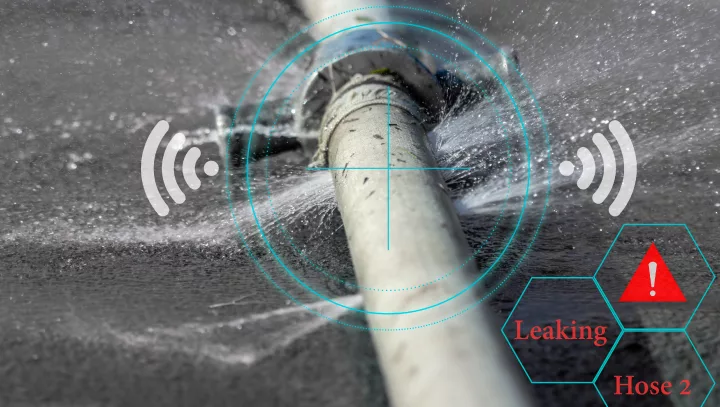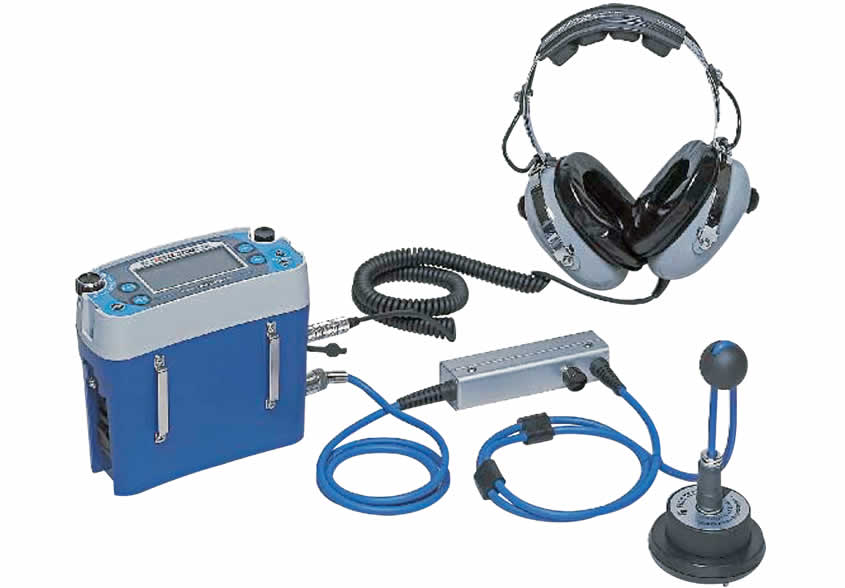Comprehensive Overview to Water Leak Detection for House Owners and Services
Comprehensive Overview to Water Leak Detection for House Owners and Services
Blog Article
Ingenious Solutions for Very Early Detection of Water Leaks in Buildings and Framework
As the stability of structures and facilities is paramount, the difficulty of early detection of water leaks has actually stimulated innovative remedies that guarantee to reinvent the way we guard against possible problems. From cutting-edge leak detection technologies to the release of IoT sensing units for real-time surveillance, the landscape of leakage prevention is developing swiftly. Device knowing algorithms offer a glimpse right into the future of leak forecast, while thermal imaging offers a non-intrusive method for pinpointing hidden leaks. Automated water circulation analysis systems are reshaping how leakages are identified and attended to, leading the way for a positive approach to water leak discovery. Each of these remedies holds the crucial to making sure the integrity and longevity of our built environment, triggering a change in the direction of an extra lasting and efficient future.
Advanced Leakage Discovery Technologies
Advanced leakage discovery modern technologies, outfitted with innovative sensors and formulas, play a vital function in swiftly determining and pinpointing water leakages in different settings. Electro-magnetic sensors can recognize modifications in electro-magnetic fields caused by water, using yet another layer of leakage detection ability.

IoT Sensors for Real-Time Tracking
In the world of contemporary water leak detection, the integration of IoT sensing units for real-time surveillance stands for a crucial development in enhancing proactive leak detection abilities. These sensing units offer constant monitoring of water systems, giving real-time information on water circulation rates, stress variants, and temperature changes. By leveraging IoT technology, these sensing units can detect even the smallest abnormalities in water use patterns, enabling early recognition of potential leakages before they escalate into major problems.
IoT sensing units transmit information to a central system, where innovative formulas analyze the information and generate notifies or notifications when irregularities are discovered. This real-time surveillance capability enables residential property owners or facility supervisors to immediately resolve leakages, reducing water damages, reducing repair service costs, and conserving water sources.
Moreover, IoT sensing units can be integrated with structure monitoring systems, permitting computerized reactions to found leakages, such as shutting down water shutoffs or triggering pumps to alleviate the go to my site influence of leaks. In general, the application of IoT sensing units for real-time surveillance significantly boosts the effectiveness and efficiency of water leakage detection in buildings and framework.
Artificial Intelligence Algorithms for Leakage Prediction

One trick advantage of using artificial intelligence for leakage forecast is its ability to continually learn and enhance its precision gradually. As even more information is collected and fed into the algorithm, it can refine its forecasts and adapt to changing problems, ultimately enhancing the integrity of leak discovery systems.
In addition, maker learning formulas can aid in recognizing refined signs of leakages that may go unnoticed by typical surveillance methods. water leak detection. By assessing complicated information collections in real-time, these algorithms can give early cautions and alerts, permitting prompt treatment and preventive maintenance to minimize prospective water damages and associated expenses
Making Use Of Thermal Imaging for Leak Discovery
Thermal imaging technology provides an appealing strategy for spotting water leaks in different systems and infrastructures. By using infrared radiation and temperature variances, thermal imaging video cameras can determine concealed leaks that are not quickly visible to the naked eye.
One of the crucial advantages of thermal imaging for leak detection is its non-intrusive nature. Unlike conventional techniques that may need damaging right into walls or floorings to situate leakages, thermal imaging enables non-destructive screening. This not only saves time and decreases costs however likewise reduces disruption to the building or framework being analyzed. Furthermore, thermal imaging can promptly check big areas, offering a comprehensive overview of possible leakage sources in a timely manner. Overall, using thermal imaging modern technology improves the effectiveness and accuracy of water leakage detection, making it an important device for maintaining the honesty of a knockout post buildings and frameworks.
Automated Water Flow Evaluation Solutions
How can computerized water flow evaluation systems transform the discovery and administration of leaks in various systems and infrastructures? Automated water circulation analysis systems supply a positive strategy to leak discovery by continually keeping track of water flow rates and patterns. By developing baseline data, these systems can swiftly recognize variances that may click for info indicate a leak, enabling prompt intervention to stop comprehensive damages.
These systems make use of sophisticated algorithms to evaluate real-time information and offer instant alerts when anomalies are detected, enabling for speedy activity to be taken. Furthermore, computerized water flow analysis systems can be incorporated with structure administration systems or IoT platforms, boosting total efficiency and allowing remote surveillance capacities.
Additionally, the data gathered by these systems can be used for predictive maintenance objectives, assisting to determine prospective weak points in the facilities before leaks take place. Generally, the application of automatic water flow analysis systems can significantly improve leakage detection and administration practices, ultimately leading to cost financial savings, reduced water wastage, and increased sustainability in buildings and infrastructure.

Verdict
To conclude, the assimilation of innovative leakage detection modern technologies, IoT sensing units, artificial intelligence algorithms, thermal imaging, and automated water flow analysis systems provides innovative remedies for very early discovery of water leakages in structures and framework. These modern technologies make it possible for real-time surveillance, forecast of leakages, and efficient detection techniques to avoid water damage and wastage. Executing these services can help in maintaining the honesty and sustainability of water supply in different settings.
Report this page